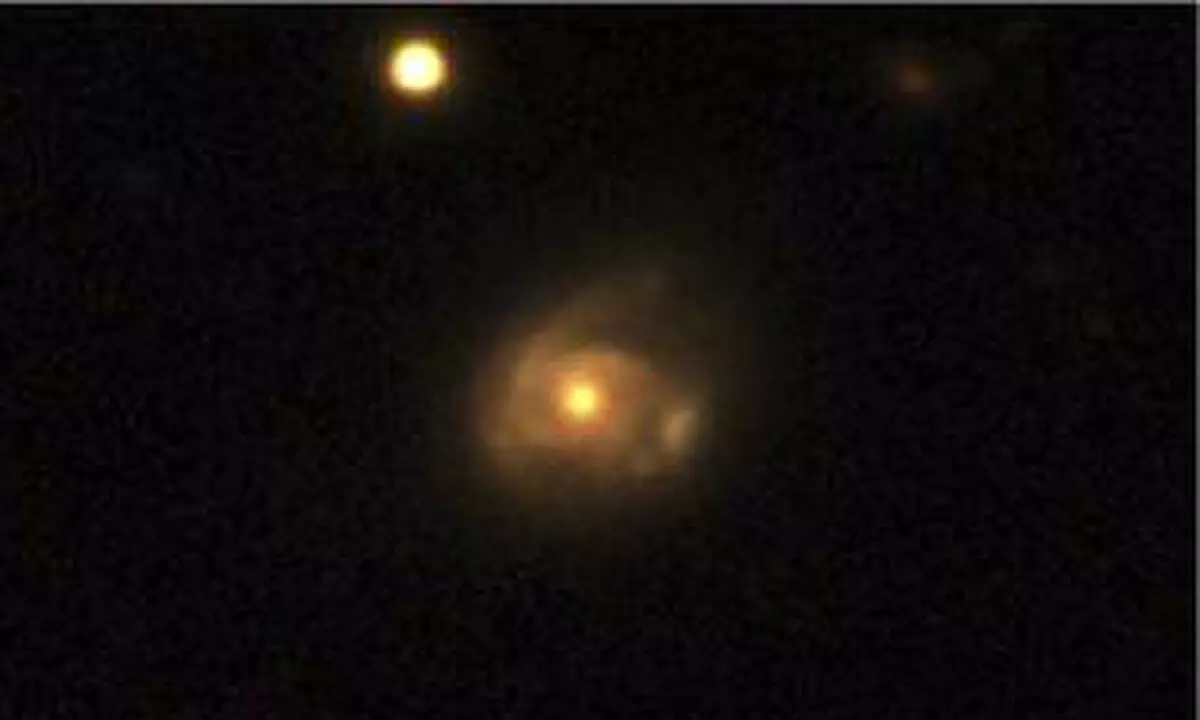Scientists spot Sun-like star being devoured by a hungry black hole
Share :

Scientists at NASA have discovered a Sun-like star that is being repeatedly nibbled on by a hungry black hole in a galaxy around 500 million light-years away.
Washington: Scientists at NASA have discovered a Sun-like star that is being repeatedly nibbled on by a hungry black hole in a galaxy around 500 million light-years away.
The star called Swift J023017.0+283603 (or Swift J0230 for short), was discovered using NASA's Neil Gehrels Swift Observatory, which was launched in 2004. The scientists used a novel method for analysing data from the satellite’s X-ray Telescope (XRT).
On June 22, last year the XRT captured Swift J0230 for the first time. It lit up in a galaxy around 500 million light-years away in the northern constellation Triangulum. Swift’s XRT observed nine additional outbursts from the same location roughly every few weeks.
Swift was originally designed to study gamma-ray bursts, the most powerful explosions in the cosmos. Since the satellite launched, however, scientists have recognised its ability to study a whole host of celestial objects, like tidal disruptions and comets.
During tidal disruption events, every time an orbiting star passes close to a black hole, the star bulges outward and sheds material, but survives. The process repeats until the star loses too much gas and finally breaks apart.
Phil Evans, an astrophysicist at the University of Leicester in the UK and Swift team member proposed that Swift J0230 is a repeating tidal disruption of a Sun-like star orbiting a black hole with over 200,000 times the Sun's mass.
They estimate the star loses around three Earth masses of material on each pass. This system provides a bridge between other types of suspected repeating disruptions and allows scientists to model how interactions between different star types and black hole sizes affect what we observe.
"We searched and searched for the event brightening in the data collected by Swift’s Ultraviolet/Optical Telescope," said Alice Breeveld, a research fellow at the University College London’s Mullard Space Science Laboratory (MSSL) who has worked on the instrument since before the satellite launched.
"But there wasn’t any sign of it. The galaxy's variability was entirely in X-rays. That helped rule out some other potential causes."
Swift J0230's discovery was possible thanks to a new, automated search of XRT observations, developed by Evans, called the Swift X-ray Transient Detector.
After the instrument observes a portion of the sky, the data is transmitted to the ground, and the programme compares it to previous XRT snapshots of the same spot. If that portion of the X-ray sky has changed, scientists get an alert. In the case of Swift J0230, Evans and his colleagues were able to rapidly coordinate additional observations of the region.













